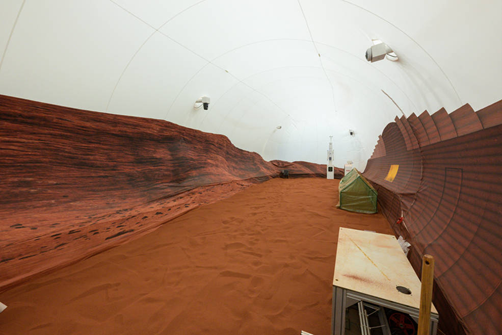Dr. Nathan Jones, an emergency medicine physician from Springfield Memorial Hospital in Illinois, will be participating in NASA’s preparation for an eventual manned mission to Mars. He will be spending one year, along with other participants, in an environment meant to simulate Mars in a study known as Crew Health and Performance Exploration Analog (CHAPEA). Jones will be serving as the medical officer on this simulated mission as these “astronauts” are put through various challenges. Other members of the crew include a research scientist and mission commander from the Mohawk Nation in Canada, a structural engineer and public works administrator who will serve as the flight engineer, and an advanced practice nurse who will serve as the science officer.
CHAPEA is a series of three, year-long simulated stays on “Mars” where crews of four are tested in the challenges of living and working on a simulated planetary surface. They will be staying in a 1700 square foot 3-D printed habitat isolated from the rest of society. The goal is to collect detailed data on cognitive and physical human responses and performance in environments designed to be as realistic as possible. The first of the three missions begins this year (2023) with follow-up missions in 2025 and 2026. Ultimately the results of these tests will inform and influence how future missions to Mars are carried out.
If you were interested in participating, the applications are unfortunately already closed. However, the prerequisites are still posted online here. Operational physicians with NASA are often trained in aerospace medicine. The Aerospace Medical Association describes the specialty as focusing “…on the clinical care, research, and operational support of the health, safety, and performance of crewmembers and passengers of air and space vehicles, together with the support personnel who assist operation of such vehicles.” The specialty allows for a large variety of ways in which to practice. Aerospace medicine physicians can be found all over the world in clinics, hospitals, and austere environments that include flying in air or space crafts. Much of the work is centered on the occupational and preventative health and safety concerns of those engaged in air and space craft activities.

NASA’s simulated Mars habitat includes a 1,200-square-foot sandbox with red sand to simulate the Martian landscape. Credits: NASA